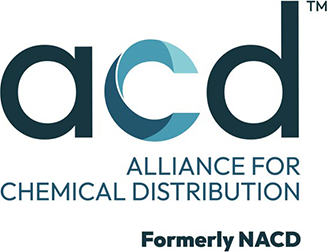A metal intermediate bulk container (IBC) is subject to the following test and inspections under the U.S. Code of Federal Regulation (49 CFR § 180.352):
Leakproofness Test – Every 2.5 Years
Each IBC intended to contain solids that are loaded or discharged under pressure or intended to contain liquids must be tested in accordance with the leakproofness test prescribed in 49 CFR § 178.813 (including pressure of not less than 2.9 PSIG) prior to its first use in transportation and every 2.5 years thereafter, starting from the date of manufacture or the date of a repair. For this test, the IBC is not required to have its closures fitted.
External Visual Inspection – Every 2.5 Years
An external visual inspection must be conducted initially after production and every 2.5 years starting from the date of manufacture or the date of a repair to ensure that:
- The IBC is marked in accordance with requirements in 49 CFR § 178.703. Missing or damaged markings, or markings difficult to read must be restored or returned to their original condition.
- Service equipment is fully functional and free from damage which may cause failure. Missing, broken, or damaged parts must be repaired or replaced.
- The IBC is capable of withstanding the applicable design qualification tests. The IBC must be externally inspected for cracks, warpage, corrosion, or any other damage which might render the IBC unsafe for transportation. An IBC found with such defects must be removed from service or repaired.
Internal Inspection – Every 5 Years
IBCs must be internally inspected at least every 5 years to ensure that the IBC is free from damage and to ensure that the IBC is capable of withstanding the applicable design qualification tests.
- The IBC must be internally inspected for cracks, warpage, and corrosion or any other defect that might render the IBC unsafe for transportation. An IBC found with such defects must be removed from hazardous materials service until restored to the original design type of the IBC.
- Metal IBCs must be inspected to ensure the minimum wall thickness requirements in § 178.705(c)(1)(iv) are met. Metal IBCs not conforming to the minimum wall thickness requirements must be removed from hazardous materials service.
Repaired IBCs
Repaired IBCs must conform to the original design type and must meet the leakproofness test, external visual and internal inspections described above.
Restest Marking and Record Retention
The date of the most recent periodic retest must be marked on the tanks, on or near the metal certification plate.
The owner or lessee of the IBC must keep records of periodic tests, initial and periodic inspections, and tests performed on the IBC if it has been repaired or remanufactured. Records must include design types and packaging specifications, test and inspection dates, name and address of test and inspection facilities, names of any person conducting test or inspections, and test or inspection specifics and results.


